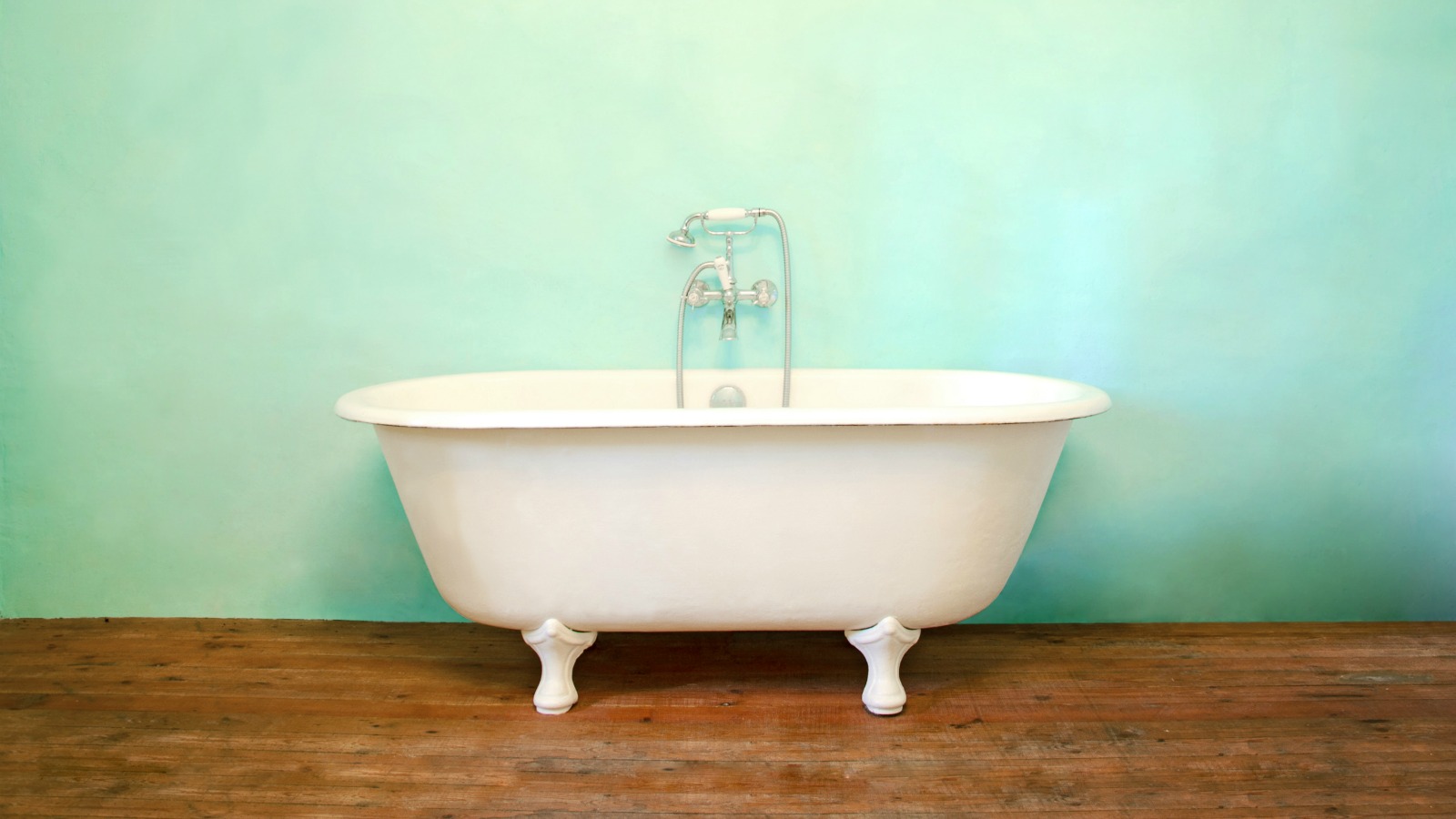Q. Dear Umbra,
After six years of rough use by tenants, the bottom of our bathtub is peeling and flaking. We can either refinish or replace the tub. Which is the greener option? Refinishing means loads of creepy chemicals while replacing the tub means more waste in a landfill.
Roopa K.
Portland, Ore.
A. Dearest Roopa,
Right now, I’m picturing your hard-living tenants showering in crampons and dropping bowling balls into the tub — and really, after six years of that kind of treatment, it’s a wonder you don’t need to replace your whole bathroom. I know, I know: It’s more likely that your renters have been rough on the bathroom finishes in the normal way (using abrasive cleaners, standing on a rubber suction bath mat, etc). Either way, the problem remains: How best to handle your peeling tub? Besides more stringently screening your tenants, that is?
Right off the bat, I must tell you that tub upgrades are one of those frustrating scrubbed-if-you-do, scrubbed-if-you-don’t situations. There is no option with squeaky-clean green credentials, so we must understand what’s available and make the best decision we can. The way I see it, you have three options:
- Toss it. As you note, one choice is tossing the old thing and starting fresh. This is one of the most expensive options: The necessary gutting and re-plumbing involved with installing a new bathtub can run you a tab of $3,000 or more (compared to $300-$650 for a refinishing job), though you can lighten your impact by buying an old salvage bathtub. Here we do have some clarity: We definitely don’t want your tub to end up in a landfill, adding to the more than 50 million tons of remodeling and construction waste Americans generate every year. So if you do yank the old tub out, promise me you will think creatively about its next life; you could turn it into a garden or artificial pond, living-room furniture, a fountain, or a giant cooler for parties. (Bathtub-yanker-outers everywhere should note that tubs in decent shape can often be donated to Habitat for Humanity or building-salvage stores as well.)
- Refinish it. In most cases, I lean toward sprucing up an existing product over replacing it, especially when the old product will create a disposal problem. Then again, Roopa, refinishing a porcelain-coated cast iron or steel tub involves what you so accurately deem “creepy chemicals.” One of the worst offenders, a solvent called methylene chloride, is so toxic that it has contributed to the deaths of at least 14 professional refinishers since 2000 through fume inhalation. And the typical tub coatings used to repair chips and flakes emit volatile organic compounds (VOCs), which can cause everything from headaches and dizziness to more serious organ damage. Unfortunately, it’s tough to get around that. There are a few brands of finishing products out there boasting to be low- or no-VOC, but these products aren’t always widely available. If you hold your nose and go for the refinishing, I strongly recommend hiring pros over trying a DIY refinishing kit: They can safely rig up the bathroom with fans to vent those noxious fumes and often have protective suits with ventilators for themselves. Shop around carefully for your remodeler: Quiz them about the chemicals they use (pushing for no-VOC options if at all possible) and how they dispose of them, and research their reviews and check references. If you’re gonna take this plunge, you want it done right.
- Line it. Your third option comes in the form of tub liners, which are acrylic coverings molded to the shape of your bathtub. (Some are made of PVC, but do you really need me to say it again?) You order one custom to fit your tub, pop it over the old one, glue it in place, and poof: new bathtub, sans the disposal problems. Acrylic is durable and fairly easy to install. In the minus column, it’s pricey ($1,000-$1,400) and it’s plastic. We don’t really know how much acrylics off-gas in the way of chemicals, either.
What you ultimately decide will depend on your budget, your existing tub, and how much remodeling you can stomach. There are no easy answers here, unfortunately.
Which brings me to this final bit of advice: Because of all these downsides of tub repair, one of the best things we can all do is keep our bathtubs in good shape so we don’t have to face this conundrum often (and we shouldn’t — a well-done refinishing job should last up to 20 years, and an acrylic liner can go even longer). That means cleaning them with non-abrasive products, nixing the suction bath mats, keeping bath products and soap off the finish (corral them in a bath basket on the wall instead), and skipping the hair dye, especially in acrylic tubs. It might be worth including these guidelines as a rider on your next lease, Roopa. You might even throw in a “no bowling in the shower” rule for good measure.
Scrub-a-dub-dubbily,
Umbra



